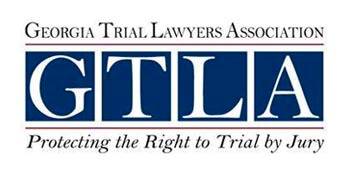Closing the Gap Too Fast: How Speeding and Tailgating Create Legal Risk on Georgia Roads
Most drivers have encountered this situation: You are following the speed limit, maybe on I-75 near Macon or heading out on a rural stretch of GA-129, when suddenly someone races up behind you. They are close—far too close. And they stay there, pressuring you to move faster, despite traffic, weather, or basic common sense.
This behavior, commonly known as tailgating, becomes exponentially more dangerous when combined with speeding. And in Georgia, it is not just an annoyance—it is a real and legally recognized safety hazard.
At Prine Law Group, we have seen how quickly a moment of pressure or aggression behind the wheel can turn into a crash with life-altering consequences. In this article, we break down how tailgating and speeding intersect, and why these habits may not just be dangerous, but legally actionable.
Speed + Proximity = Catastrophe
When someone is speeding, their reaction window is already shortened. Add in tailgating—which leaves little to no buffer space—and you have a situation where any unexpected obstacle, brake light, or swerve becomes a potential crash trigger.
According to the Georgia Governor’s Office of Highway Safety, tailgating and speeding consistently rank among the top contributing factors in rear-end collisions across the state. But their danger is not limited to simple fender benders. High-speed follow-ins often result in:
- Spinal injuries from sudden impact
- Traumatic brain injuries due to head jolts
- Secondary collisions from vehicle spin-outs
- Multi-vehicle pileups on highways or interstates
These are not hypothetical risks. We have represented clients who were rear-ended at 60+ mph, then hit again when their vehicle was pushed into traffic.
Why Following Distance Matters—Legally
Georgia law requires drivers to maintain a “reasonable and prudent” following distance based on speed, traffic, and road conditions. This is not vague. Under O.C.G.A. § 40-6-49, a driver who fails to leave adequate space between their car and yours could be found negligent—even if a crash does not occur.
Tailgating combined with speeding demonstrates reckless disregard for these requirements. In civil court, this type of driving behavior is often treated as evidence of fault—and may directly impact liability decisions in personal injury claims.
Weather, Weight, and Risk Amplification
The physics of stopping distance become even more unforgiving in poor weather. Rain, fog, or even autumn leaves on the road can:
- Increase stopping distance by 25–50%
- Reduce tire grip, especially for worn tires
- Obscure visual cues like brake lights or turn signals
Now add in a heavy vehicle—like an SUV or pickup—and the stopping power is even worse. For motorcycles or compact cars being tailgated, this can be terrifying. And it is not just fear—it is real risk. We have handled cases where the weight differential between vehicles made a minor mistake into a major injury.
Psychological Pressure and Driver Error
Tailgating does not just put the following driver at risk—it affects the person being followed. Most people, when pressured by an aggressive vehicle behind them, will either:
- Increase speed beyond comfort
- Brake-check (slam the brakes lightly to “warn” the tailgater)
- Attempt a risky lane change
- Fixate on the rearview mirror and lose focus on the road ahead
None of these responses are ideal. And legally, if the tailgater’s behavior is found to have provoked erratic or unsafe decisions, it may contribute to shared liability under Georgia’s modified comparative fault system.

When Speeding Becomes a Pattern, Not a Moment
Some drivers do not tailgate because they are in a rush—they do it because they drive that way. Chronic speeders often display patterns of reckless behavior, including:
- Weaving in and out of traffic
- Ignoring speed changes in school zones or construction areas
- Refusing to yield
- Accelerating aggressively even in residential areas
These patterns matter in court. At Prine Law Group, we often work with accident reconstruction experts and witness testimony to show that a driver’s habits—not just a single moment—created a dangerous situation.
What You Should Do If You’re Injured
If you were struck by a speeding or tailgating driver in Georgia, do not assume your case is “just another accident.” Document everything:
- Take photos of vehicle damage and skid marks
- Write down exactly what you remember about the other driver’s speed or position
- Get witness statements, especially if they noticed aggressive behavior
- Seek medical care immediately—even if your injuries feel minor
Then, speak with an attorney. Cases involving speed and following distance often hinge on precise evidence and early investigation.
Were You Injured by a Speeding or Tailgating Driver in Georgia?
If you have been hurt in a crash where another driver was following too closely or driving dangerously fast, you may be entitled to compensation beyond what insurance initially offers. At Prine Law Group, our car accident attorneys in Macon, GA understand how to prove liability, demonstrate driving patterns, and hold reckless motorists accountable.
📞 Call (478) 257-6333 or contact us online to schedule a free consultation today.
We are here to help you recover—not just physically, but legally.





